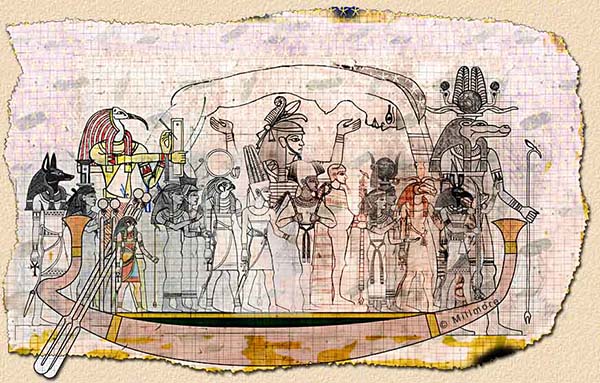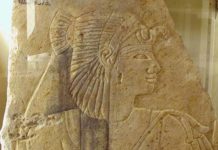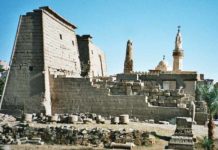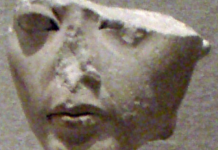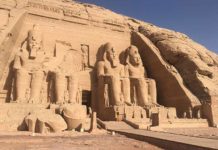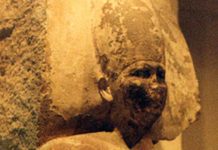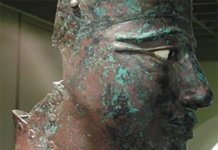Learn about the different kinds of gods and goddesses Ancient Egyptians worshipped and how Egyptians believed they would get into the afterlife.
The goddess most widely worshipped across Egypt was Hathor for whom a narrative is told on a gilded shrine in the burial chamber of Tutankhamun. The sun god Ra sends his daughter Hathor to destroy mankind in revenge for disrespect. When he stops after an initial slaughter Hathor is enticed away from human blood to a lake of blood-coloured beer, which seduces her into loving kindness. She is motherly love and also represents the power of female sexuality. She was a beautiful woman who tended her children like the cow tending her calf. In fury she could turn into the guise of a lioness.
Other Female Goddesses
There are other female goddesses. Sekhmet is a leonine fury that needs to be appeased and manifests itself as a plague on Egypt known as the ‘year of Sekhmet’. Mut the mother is the mother incarnate represented by lion heads as in Western Thebes in Amenhotep III’s temple or appears as human form. Bastet the goddess of the ointment jar provided a means of protection and was worshipped as a cat.
Voyage of the Sun-god
The voyage of the sun-god through creation was portrayed as a winged sun-disc or as a boat travelling in the air as if across the waters of the Nile. Every day and night the sun has to move through this process and demanded protection for life to continue.
The most important moment was as the sun travelled through the night skies; in this underworld the sun was physically resurrected to have the energy to enable him to power through the next twenty four hours. The Underworld Books note this process in great detail. Egyptians saw through the sun’s unending rising they saw a guarantee of their own immortality or rising after death.
Thoth
Thoth became god of the moon, represented as an ibis or baboon, crowned with the crescent moon and lunar disc. Since the calculation of fractions and time came from the moon Thoth also began to be known as the god of knowledge, in particular written knowledge.
Ancient Egyptians and the Afterlife
The human being to Egyptians was made of different elements that must be kept in harmony for a good life and afterlife. This was the subject of some offerings and prayers made in the New Kingdom. They would pray on the lifespan of a person, their destiny, their shadow and above all their name. These were united into the soul ka and by the Middle Kingdom ba, soul of mobility, (only gods had ba previous to this time).
After death there were various classes of people; first the gods, goddesses, akh-spirits (enlightened beings) and the mut-dead. To make sure you became an akh-spirit and avoided becoming a mut-dead person you had to be transfigured upon death by combining all elements of the above personality.
Horus and Osiris
These two gods are very prevalent in the funerary texts, magical formulae and the inscriptions of kings. Horus was originally worshipped as the primary god of kingship, represented by the falcon. The first names of the kings of Egypt were introduced by Horus such as the Horus Narmer or the Horus Aha.
The king was the incarnation of a god on earth. Horus is in opposition to Seth, who was a being made up of anarchic features: a forked tail, a pair of tall ears and a snout. Seth was the disorder at work against the order of Horus. Horus was good energy inherited from the sun god but the energy of Seth was also needed to protect the solar boat.
Reference:
- The British Museum of Ancient Egypt, British Museum Press, London, 2007


